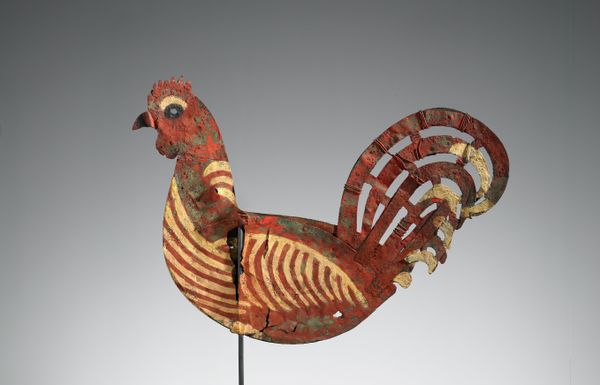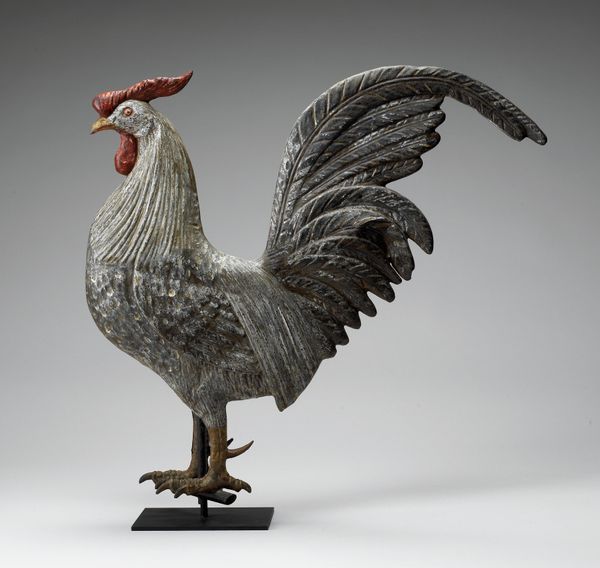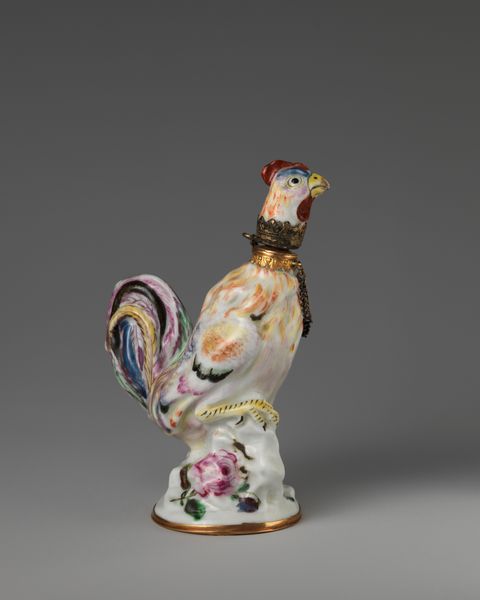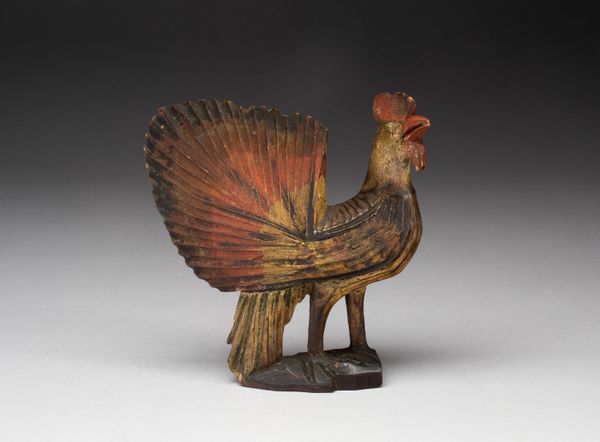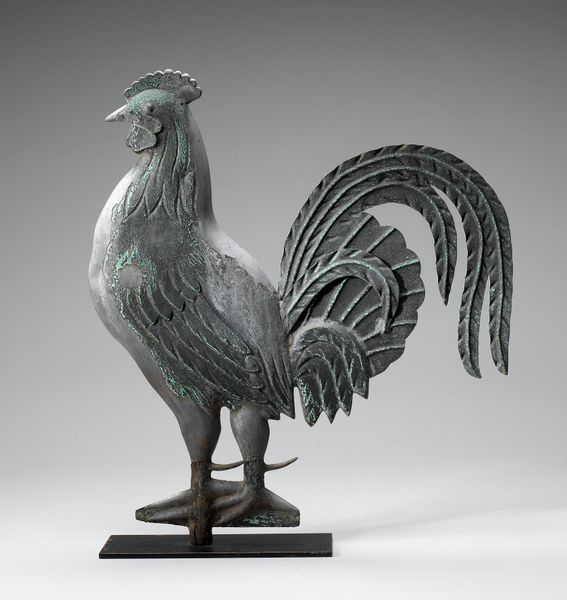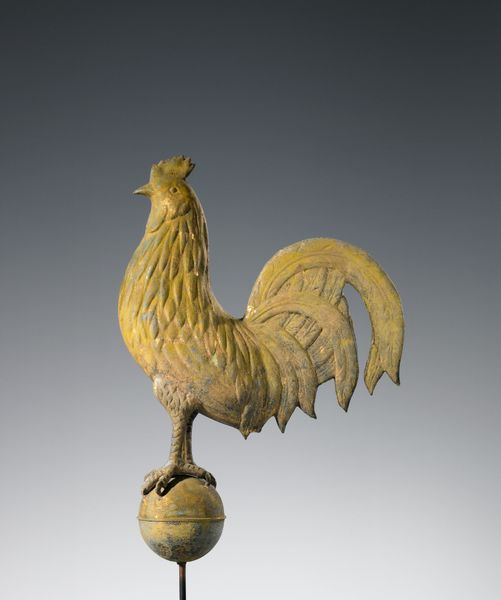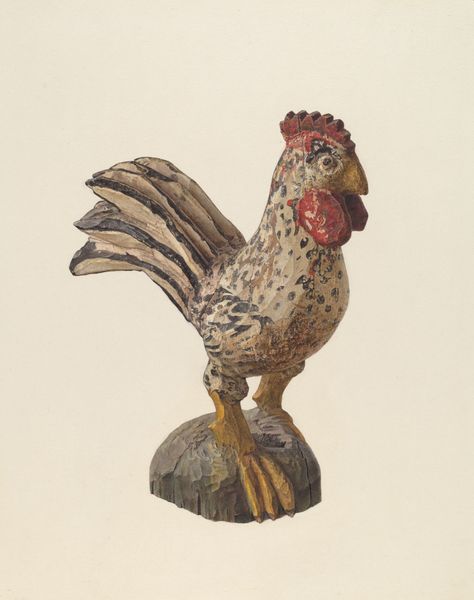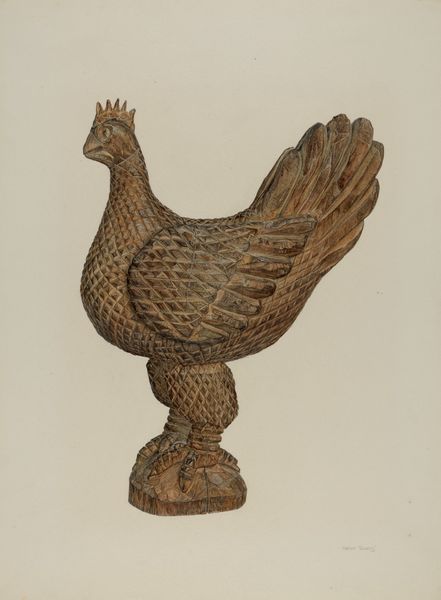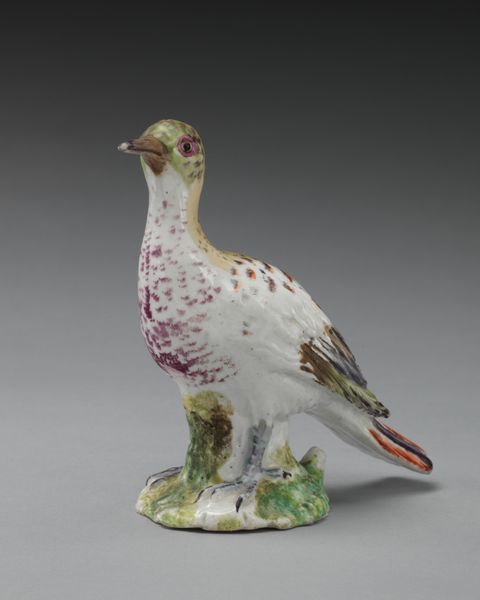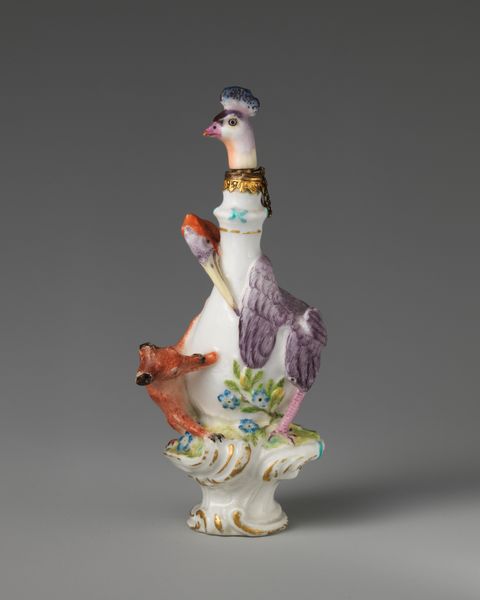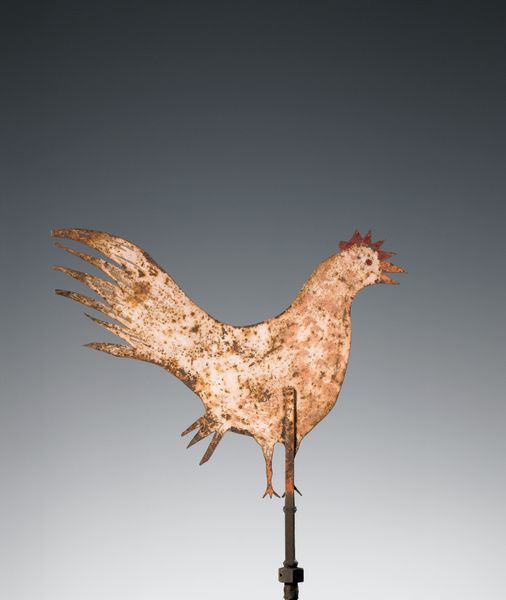
carving, sculpture, wood
#
folk-art
#
carving
#
animal
#
figuration
#
sculpture
#
wood
#
decorative-art
#
cartoon carciture
Dimensions: 15.2 × 10.2 ✕ 5.1 cm (6 × 4 ✕ 2 in.)
Copyright: Public Domain
Editor: We're looking at Wilhelm Schimmel's "Rooster," made sometime between 1870 and 1890. It’s a wood carving, quite small. It has a kind of playful charm, but there’s also something about the roughly hewn wood and simple paint that feels…laborious. What strikes you about this piece? Curator: The immediate draw for me is the artist’s hand. Schimmel was an itinerant woodcarver, often trading his carvings for room and board. Think about the socio-economic context – a marginalized figure using readily available materials to create these whimsical forms, primarily for survival. Do you see how the material and method speak to a story of production and necessity, blurring lines between art and craft? Editor: I do. It’s almost like the rooster is a product of the artist’s own struggle, made with whatever was at hand. How would Schimmel source materials and the carving implements for his works? Curator: Exactly. The fact that he uses simple carving tools, perhaps just a pocketknife, to transform scrap wood into these charming figures highlights the resourcefulness and ingenuity embedded in folk art. Think about the value we place on ‘high art’ versus objects crafted out of sheer necessity. The rooster, in that sense, becomes a potent symbol of survival and adaptation, reflecting a wider socio-economic disparity of his time. Editor: That's a really insightful perspective. It changes the way I see it entirely. I was initially charmed, but now I'm thinking about the artist's lived experience embedded in the materials themselves. Curator: Precisely. The value lies not just in its aesthetic appeal but in its testament to the ingenuity of labor, a cultural artifact born from the realities of a specific social context. Editor: Thanks! I'll certainly never look at a wood carving the same way. Curator: The story behind the creation transforms the art, indeed.
Comments
No comments
Be the first to comment and join the conversation on the ultimate creative platform.
